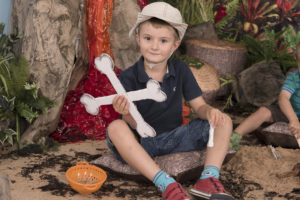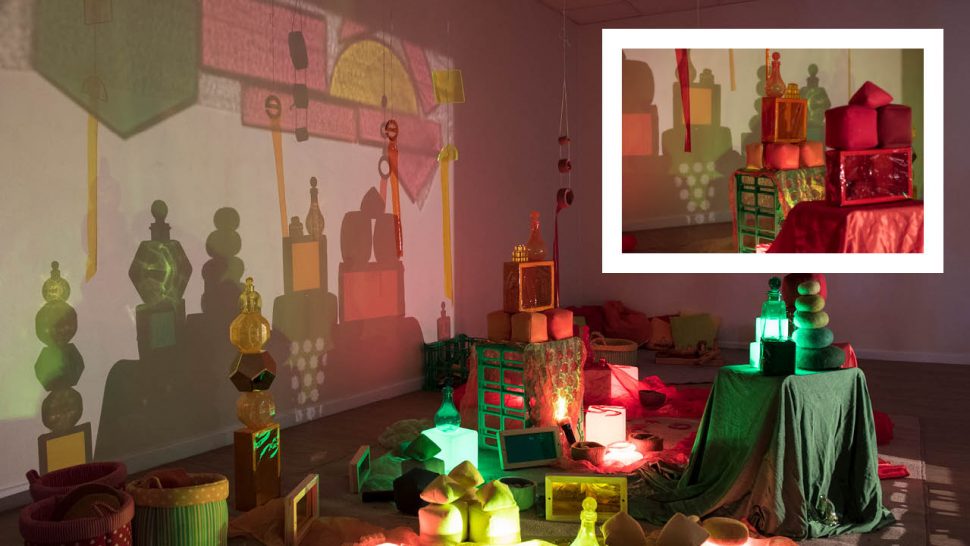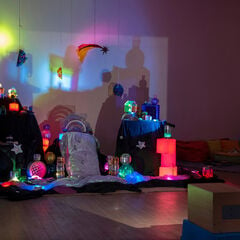We talk a lot in the Early Years about the concept of Awe and Wonder. Two fairly small words that promote some huge emotional responses. When words are used a lot, they can sometimes come to lose their meaning and be used in situations that don’t do them justice. But true moments of awe and wonder can have significant impact on children’s engagement with their environment and their potential for learning.
Although awe and wonder are similar, they are not the same. We will often talk about being ‘in awe’ of something which means that we recognise its grandeur and see it as greater than us. We might be in awe of someone’s skills, or knowledge. Or in awe of the view from our window, describing it as ‘awesome’.
Wonder on the other hand is an emotion that is usually associated with feelings of positivity and joy and, indeed, where the word wonderful comes from! It is also an emotion liked to curiosity – an opportunity to think and ‘wonder’ about the world around us.
So, you can see that if we are able to include opportunities for children to experience awe and wonder in a variety of different situations, we can create moments of learning, inspiration, aspiration and curiosity.
What children find awesome or wonderful is not always the same. It can very much depend on what they are interested in and what previous experience they have got. When my boys were little, I remember taking them to see dinosaur skeletons in the museum and them being literally struck dumb with awe and wonder. Once they found their voices again, they talked about nothing else for weeks. Even now as adults, they recount that trip.

More recently I took my 5-year-old niece to see the same dinosaur bones and she was distinctly underwhelmed; I would even go so far as to say disinterested! When we turned the corner to be confronted by T-Rex in all of its prehistoric splendour she uttered the immortal words ‘Can we go to the café now for a snack?’. I don’t think she will be talking about the bones in years to come, but she might remember the cookie she was allowed to eat that was nearly as big as her head. Her reaction of awe and wonder to that was quite something else and all she has talked about since!
It is diversity and flexibility in our settings and their provision that will provide maximum opportunity for all children to truly experience these emotions. There is no magic resource that will guarantee success, but one really simple, natural element of our environment that, in my experience, comes close is the use of light, and its absence – dark.
Light and dark are naturally occurring states that children will be very familiar with, so this makes them easily accessible and good starting point for learning.
We also know that as humans we attach a lot of emotion to different stages of light and dark. How light it is demarcates our day. When to get up, when to go to bed.
When the light is bright, we are at our most enabled as humans as we can see what is happening around us. Conversely when it is dark, we lose the power of one of our major senses, sight and that can bring with it some negative emotions.
Because of this, the concept of darkness is also attached to feelings of fear. Scary stories are often set in the dark, sinister creatures lurk in the dark. We all have strong emotional and personal connections to light.
Light play is particularly successful when children have the opportunity to control the light source. When they are able to do this, they are not only exploring concepts such as cause and effect – like pushing a switch to make a torch come on and off. They are also having some powerful control over the emotional connections of anyone who is within their near vicinity.
How often have you heard shrieks of delighted terror when someone has switched off the torch in the dark tent? This is more than just controlling light, it is about connecting with and affecting the emotional states of others.
Light also provides huge potential for children to be able to manipulate and view the world they inhabit in a variety of different ways. Shining light onto an object can completely change how it looks. Shining light through it can change its colour. Shining a light at it can create a shadow that can be tiny or huge the possibilities are endless.

Whilst we can support children in their investigation of light by providing them with opportunities to notice light both natural and man-made and giving them access to resources that support investigation and play. The most powerful thing that we can do is give them the opportunities and independence to investigate, manipulate and experience light in a way that is meaningful to them. That could be outside watching the sun glinting on the ripples of a puddle or inside with the lights off creating huge shadows on the ceiling.
It is through those opportunities that they might just find some awe and wonder.
(If all else fails you could always try giving them a cookie as big as their head!)

With thanks to Alistair Bryce-Clegg, of ABC Does, for writing this blog. Alistair is an established educational consultant specialising in the education of children in the Early Years.




